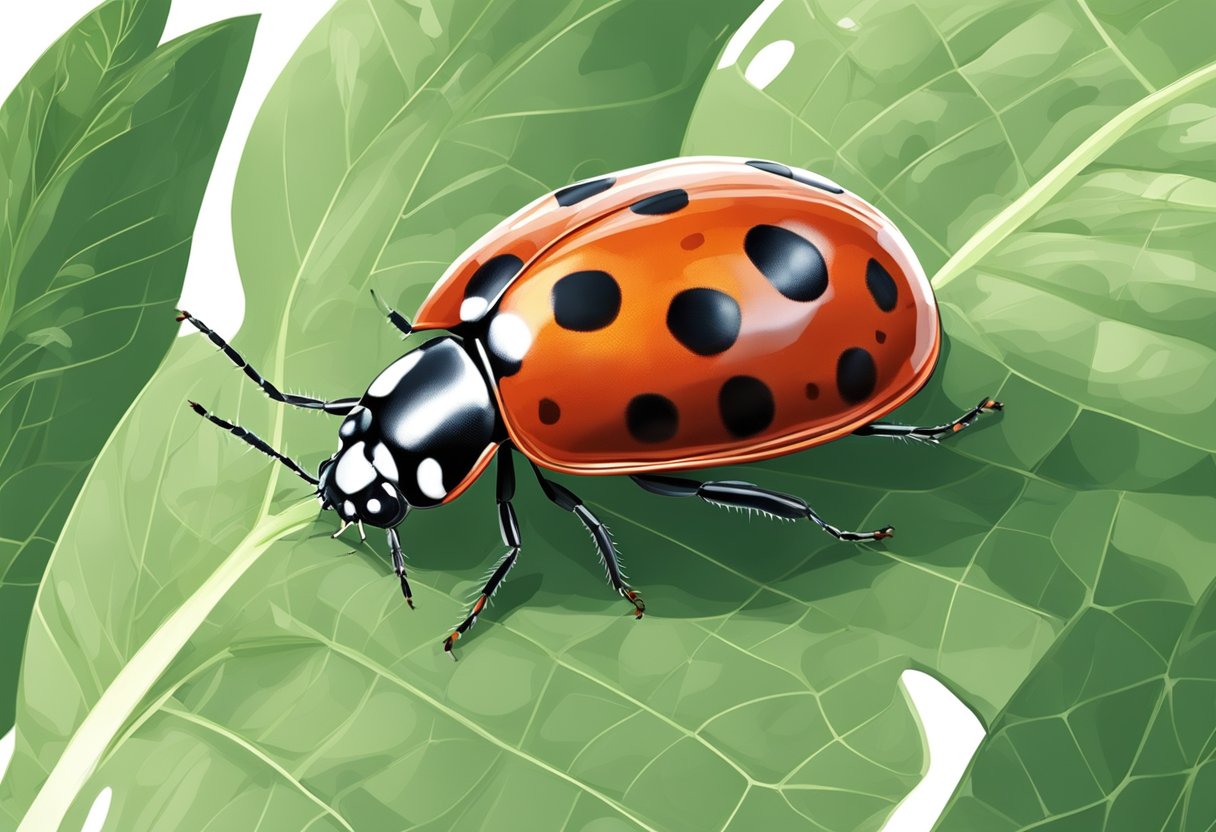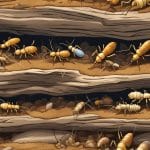Types Of Ladybugs
Ladybugs are a common sight in gardens and fields, and they are known for their bright colors and distinctive spots. However, not all ladybugs are the same, and there are many different types of ladybugs with unique characteristics. In this article, we will explore the different types of ladybugs, their classification, anatomy, and species diversity and distribution.
Ladybugs are beneficial insects that play an important role in the ecosystem. They are natural predators of pests like aphids and mites, and they help to keep these populations in check. Ladybugs are also important pollinators, and they are often used in organic farming as a natural alternative to pesticides.
Key Takeaways
- Ladybugs are beneficial insects that play an important role in the ecosystem by controlling pest populations and pollinating plants.
- There are many different types of ladybugs with unique characteristics, including variations in color, spots, and patterns.
- Ladybugs are often used in organic farming as a natural alternative to pesticides.
Classification and Anatomy

Taxonomy
Ladybugs belong to the family Coccinellidae, which is a diverse and widespread group of small beetles. Within this family, there are many different genera and species of ladybugs. The exact number of categories or subgroups can vary depending on the classification system used.
The scientific classification of ladybugs is as follows:
- Kingdom: Animalia
- Phylum: Arthropoda
- Class: Insecta
- Order: Coleoptera
- Suborder: Polyphaga
- Superfamily: Cucujoidea
- Family: Coccinellidae
Physical Characteristics
The body of a ladybug is divided into three parts: the head, thorax, and abdomen. The head is small and round with two large compound eyes and a pair of antennae. The thorax is the middle section of the body and is covered by a hard plate called the pronotum. The wings of ladybugs are located under a protective shell-like structure called the elytra.
Ladybugs have six legs, with each leg having three segments. The legs are attached to the thorax and are used for walking and climbing. Ladybugs are also capable of flying, and their wings can be folded neatly under the elytra when not in use.
Ladybugs come in a variety of colors and patterns. The most common color is red, but they can also be yellow, orange, brown, or black. Some ladybugs have spots, while others have stripes or no markings at all. The color and pattern of a ladybug can vary depending on the species and age of the ladybug.
In summary, ladybugs are small beetles belonging to the family Coccinellidae. They have a distinctive body structure with a small head, thorax, and abdomen. Ladybugs have six legs and are capable of flying. They come in a variety of colors and patterns, which can vary depending on the species and age of the ladybug.
Species Diversity and Distribution
Ladybugs are a diverse group of small beetles belonging to the family Coccinellidae. There are about 5,000 species of ladybugs in the world, and they are found in almost every part of the world. Ladybugs are known for their bright colors and distinctive spots, which vary in number and pattern depending on the species.
Native Species
Many species of ladybugs are native to North America, Europe, and Japan. The seven-spotted ladybug (Coccinella septempunctata) is a common native species found throughout much of the United States. This species is easily recognizable by its bright red color and seven black spots.
Introduced Species
In recent years, several species of ladybugs have been introduced to North America from other parts of the world. The Asian lady beetle (Harmonia axyridis) is one such species that was introduced to North America from Asia in the 1980s. This species is larger than most native ladybugs and can vary in color from yellow to orange to red. The convergent ladybug (Hippodamia convergens) is another introduced species that is now common in many parts of North America. This species is black with red spots and is often used as a biological control agent for aphids.
Ladybugs are also important predators of many agricultural pests, such as the Mexican bean beetle (Epilachna varivestis). This species is native to Mexico but has been introduced to the United States and is now a major pest of beans and other legumes.
Ladybugs are found in a wide range of habitats, from forests and grasslands to agricultural fields and urban gardens. They are important indicators of ecosystem health and are used by scientists to monitor changes in biodiversity and ecosystem function.
Life Cycle and Reproduction
Ladybugs are fascinating insects that go through a complete metamorphosis during their life cycle. The life cycle of a ladybug consists of four stages: egg, larva, pupa, and adult. The entire life cycle of a ladybug can take anywhere from a few weeks to several months, depending on the species and environmental conditions.
Stages of Development
The first stage of a ladybug’s life cycle is the egg stage. Female ladybugs lay their eggs in clusters on the underside of leaves, and each cluster can contain up to 50 eggs. The eggs are usually yellow or orange in color and are attached to the leaf with a sticky substance.
Once the eggs hatch, the larvae emerge. Ladybug larvae are long and narrow with spiky bodies and six legs. They feed on aphids and other small insects, and they can grow up to twice their size during this stage.
After the larvae have eaten enough, they enter the pupa stage. During this stage, they attach themselves to a leaf or stem and form a hard shell around their bodies. Inside the shell, the larvae transform into an adult ladybug.
Finally, the adult ladybug emerges from the pupa shell. Adult ladybugs have a round body with six legs and wings. They are usually red or orange with black spots, although some species have different colors and patterns.
Reproduction Process
Ladybugs reproduce ually, and each species has its own pheromones for attracting a mate. When they find each other, the male grips the female from behind and holds on tight. The female then lays her eggs on the underside of leaves, and the life cycle begins again.
In conclusion, the life cycle of a ladybug is a fascinating process that involves four distinct stages of development. From the egg stage to the adult stage, ladybugs undergo a complete metamorphosis that allows them to thrive in a variety of environments. Their reproduction process is also unique and essential for the continuation of their species.
Diet and Predation
Feeding Habits
Ladybugs are known for their voracious appetites, and their diet is primarily composed of plant-eating insects and pests. They are particularly fond of aphids, scale insects, and spider mites, which are common agricultural pests that can damage crops and gardens. Ladybugs are also known to feed on whiteflies, which are another type of plant pest.
Ladybugs have a unique feeding habit, as they are capable of consuming several times their body weight in food each day. They use their strong mandibles to crush and consume their prey, and they are able to digest their food quickly, which allows them to consume large quantities of insects in a short amount of time.
Natural Predators
Ladybugs are not without their own natural predators, however. Birds, spiders, and other insects are known to prey on ladybugs, particularly during their larval stage. Ladybugs are also vulnerable to parasitic wasps, which lay their eggs inside the ladybug’s body. Once the eggs hatch, the wasp larvae consume the ladybug from the inside out.
Despite their natural predators, ladybugs are considered beneficial insects due to their ability to control plant pests. Farmers and gardeners often welcome ladybugs into their fields and gardens, as they provide natural biocontrol and help protect crops and plants from damage caused by aphids, mites, and other plant pests.
In conclusion, ladybugs are important predators in the world of agriculture, and their feeding habits and natural predators play a significant role in their survival and impact on the environment.
Environmental Impact and Human Interaction
Ladybugs play a crucial role in the ecosystem as they feed on pests that are harmful to crops and gardens. They are considered beneficial insects and are often used as a natural form of pest control. Ladybugs are also important for pollination and help in maintaining the balance of the ecosystem.
Agricultural Significance
Ladybugs are known to feed on aphids, mites, and other pests that harm crops. Farmers and gardeners often release ladybugs in their fields and gardens to control pests, reducing the need for harmful pesticides. Ladybugs are also known to feed on the eggs of harmful insects, preventing them from hatching and causing further damage to crops.
Conservation Status
Despite their importance, ladybugs are facing a decline in population due to habitat loss, climate change, and the introduction of invasive species. Some species of ladybugs are listed as endangered, and conservation efforts are being made to protect them. It is important to take proactive steps to protect and support ladybug populations to ensure their continued presence and beneficial impact.
In conclusion, ladybugs are important for the ecosystem and human interaction. They play a crucial role in controlling pests and maintaining the balance of the ecosystem. It is important to take proactive measures to protect and support ladybug populations to ensure their continued presence and beneficial impact.






